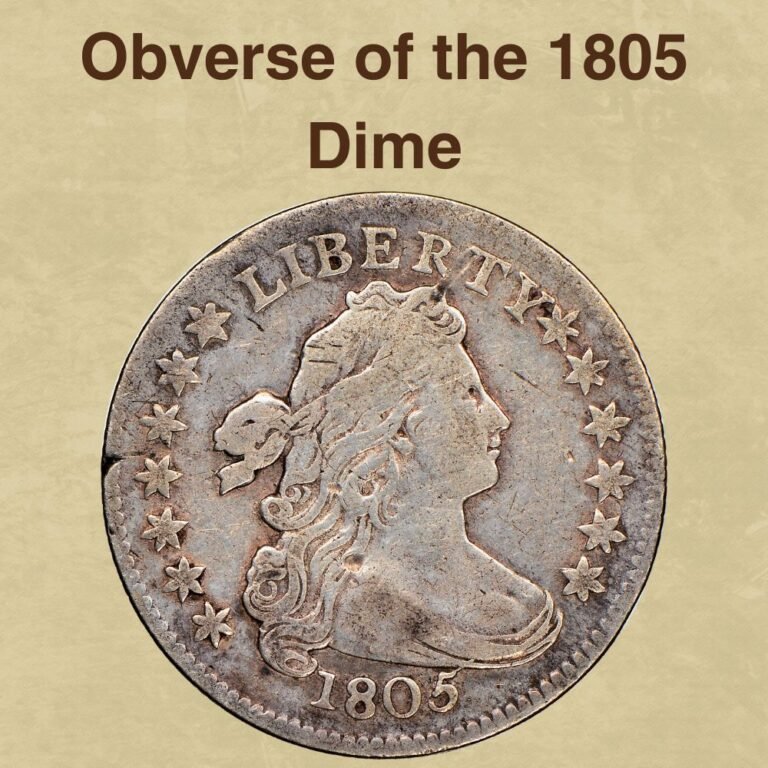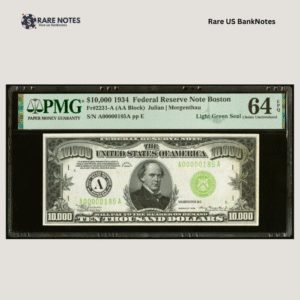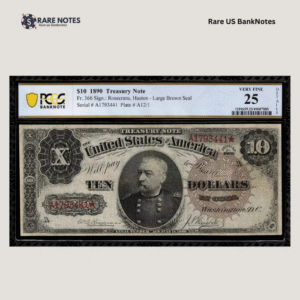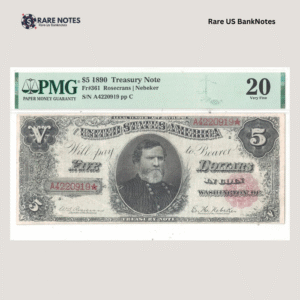If you are building a Draped Bust silver dollar collection, you are probably curious about the 1801 silver dollar value. With a historically low mintage, this key date is essential addition to any Draped Bust silver dollar set. In this guide, we’ll cover everything you need to know about this iconic coin, including its interesting history, standout features and expert grading tips. You will also discover fascinating die varieties and minting errors that can make all the difference between a high-value 1801 silver dollar and one of lesser worth
So, without further ado, let’s find out: how much is an 1801 silver dollar worth?
1801 Silver Dollar Value Chart |
||||
| Mint Mark | Good | Fine | Extremely Fine | Uncirculated |
| 1801-No Mint Mark Silver Dollar Value | $1,085 | $1,800 | $4,600 | $230,000 |
History of the 1801 Silver Dollar
The 1801 silver is dollar is one the earliest specimens in the Draped Bust dollar series, which the United States Mint struck from 1795 to 1804, and then later through to the 1850s.
The Draped Bust, which replaced the Flowing Hair design, is believed to have been created by artist Gilbert Stuart. The Flowing Hair design was the first ever used on the earliest silver dollars struck by the Mint. When Mint Director Henry William de Saussure came to office in 1795, he suggested a design change, asserting that American coinage needed a more modernistic design change.
It is speculated that Gilbert Stuart modelled the Draped Bust design after Philadelphia socialite, Ann Willing Bingham. After Stuart submitted several sketched, he eventually received approval from Mint engraver Robert Scot and de Saussure. Eventually, President George Washington and Secretary of State Thomas Jefferson, gave their approval and paved way for production.
Production of the Draped Bust silver dollars began in late 1795, just months before de Saussure’s resignation. Soon after, he was replaced by Elias Boudinot who immediately ordered that the Mint resort back to striking silver coinage in 89.2% fineness as was initially mandated by Congress in the Coinage Act of 1792.
Early production saw a relatively high mintage of Draped Bust silver dollars but by 1797, production had declined by about 62%. A variety of factors contributed to this decline but the main reason was the increasingly low bullion deposits. A notable design change occurred in 1798 when the small eagle on the reverse was replaced with the heraldic eagle.
The Mint shipped many of the silver dollars to China where they were melted to meet the country’s huge demand for silver bullion. At the same time, the Mint began focusing more on smaller denominations, which further contributed to the decline in silver dollar production so much so that by 1801 production had dropped to just 54, 454. Eventually, minting of the silver dollar was suspended in 1804 in favor of the half dollar and other smaller denominations.
The 1801 silver dollar is considered a key date primarily due to its historically low mintage. Existing survivors are scarce and Mint State specimens are even rarer, making this coin even more appealing. If you are lucky to come across a moderately worn example, you might be able to trade it for a fortune.
Also read: 12 Most Valuable One-Dollar Coin Worth Money
Features of the 1801 Silver Dollar
Due to its status as a key date, the 1801 silver dollar is a target for forgery. Understanding the key features is essential not only for grading but also for authenticating your 1801 silver dollar. Knowing these physical attributes will also help you identify Draped Silver dollars that are worth money.
Here’s what to look out for:
Obverse of the 1801 Half Dollar

The front side features a right-facing Liberty in drapey clothing that highlights her bust. Her hair flows smoothly and is lightly held with a ribbon.
The word LIBERTY appears above her while the date, 1801, is shown at the bottom along the rim. Lady Liberty’s portrait is encircled by thirteen stars, seven to the left and six to the right.
Reverse of the 1801 Half Dollar

The reverse depicts a heraldic eagle with wings stretched out and a shield on its breast. The shield displays horizontal lines, which represent the thirteen original states and vertical lines that represent the authority of the federal government.
The eagle holds in its beak a flag with the Latin inscriptions, E PLURIBUS UNUM, which means Out of Many, One. In its right talon, the eagle holds an olive branch, symbolizing peace and in the left talon is a bunch of arrows, representing security and a readiness to defend the nation.
Above the eagle’s head is a billow of clouds and a constellation of thirteen stars, also symbolic of the original thirteen states. The words UNITED STATES OF AMERICA are inscribed in a full arch along the coin’s circumference.
Other Features of the 1801 Silver Dollar
Additional notable features of the 1901 silver dollar include:
- Diameter: 40.00 millimeters
- Weight: 27.00 grams
- Edge: Lettered: HUNDRED CENTS ONE DOLLAR OR UNIT
- Metal Composition: 2% Silver, 10.8% Copper
- ASW: 0.7731oz
- Fineness: 892
Also read: 14 Most Valuable Coins In Circulation
1801 Silver Dollar Value Guides

So, how much is an 1801 half dollar? The value of your silver dollar will largely depend on the condition and rarity. Less worn coins in this series are rare and will typically be more valuable.
There’s only one variety of the 1801 silver dollar, which was struck at the Philadelphia Mint:
1801 No-Mint mark Silver Dollar
Let’s find out how much you can expect from this coin.
- Circulated Examples: These are fairly common but most examples are heavily worn. Majority of the gradable survivors range from Fine to Very Fine with few being graded higher than this. Due to their relative scarcity, even lower grade examples will command premium prices. For example, a piece graded Good (G) will sell for as much as $1,200, a Fine (F) one for about $2,025 and an Extremely Fine (XF) will fetch up to $5,800. About Uncirculated (AU58) pieces are rare and will command large premiums of up to $20,750.
- Mint State Examples: Uncirculated examples are extremely rare and will equally fetch significant premiums even in lower Mint State grades. An example graded MS60 will sell for as much as $26,000 and prices will increase dramatically for every slight change in grade. For example, an MS63 will command up to $86,500 and an MS64 will sell for at least $145,000. Gems are genuinely rare and will typically be worth quite a lot—for example, an MS65 can fetch as much as $300,000.
- Auction Record: In a record-shattering auction, Heritage Auctions sold an MS65+ for a remarkable $329,000, making this the most valuable 1801 silver dollar to date.
Also read: Top 10 Most Valuable Morgan Silver Dollar Worth Money
1801 Silver Dollar Grading
Grading an 1801 silver dollar can be quite challenging because these are some of the earliest U.S. coins and most are, therefore, heavily worn. Even small differences in the amount of wear can greatly affect the coin’s value.
When grading, start by examining the key design details such as Liberty’s portrait including her hair, cheek, clothing, the inscription LIBERTY, and the date, “1801.” On the reverse, pay attention to the eagle’s wings, the shield and the inscriptions. These features will be sharp and detailed in high grade coins and less well-defined in lower grade silver dollars.
Addition, you should examine the strike quality and luster. High-grade coins will usually display a consistent, strong strike, original mint luster, well-defined details, and few if any flaws. Lower-grade silver dollars, on the other hand, will have a weaker strike, extensive wear, and little to no surface luster.
Rare 1801 Silver Dollar Errors List
The Mint generally used simple machinery and manual methods to create dies and planchets for early coinage. As such, minting errors were less likely to occur but a few noteworthy errors do show up in the 1801 silver dollar series.
Here are some to watch out for:
1. 1801 Silver Dollar Die Crack Error
Although not too common, some 1801 silver dollars spot die crack errors. These are small cracks that form on the die’s surface and are transferred to the coin. Larger, more dramatic, or visually appealing die cracks will usually command higher prices. Expect an increase of between $20-$100 on the value of your 1801 silver dollar with a die crack error.
2. 1801 Silver Dollar Off-Center Strike Error
An off-center strike error occurs when the die and planchet are misaligned. This results in the die striking the planchet away from the center, leading to the design partially missing or shifted to one side.
The value of an off-center strike error depends on the extent of misalignment, for example, a coin with a 45% misalignment will typically be worth more than one with a 5% misalignment or off-center strike.
An off-center strike error can boost the value of your 1801 silver dollar by $20-$100 depending on the coin’s visual appeal.
3. 1801 Silver Dollar Clipped Planchet Error
A clipped planchet error occurs when a portion of the coin’s rim is accidentally cut-off during the planchet-making process.
The clipped edge can be straight, curved or jagged. The larger and more dramatic the clip, the more valuable the error. This error can increase the regular 1801 silver dollar value by as much as $20-$150, and can be an excellent addition to your collection.
In addition to these noteworthy minting errors, it’s also important to familiarize yourself with the main die varieties in the 1801 silver dollar series. In striking this coin, the Mint combined two obverse dies and four reverse dies, resulting in four die varieties.
However, numismatists recognize three main die varieties, which we’ll go over. These die varieties are based on the coin catalogues of the renowned numismatists Bolender, Bowers, and Borchardt and are abbreviates as “BB.”
Let’s look at the three main die varieties:
4. The Close Date Variety (BB-211)

The BB-211 is more common than the other two varieties but can be fairly scarce in higher grades. This variety is identifiable by its closely knit digits in the date “1801” on the obverse. Another key feature is that the first star is further away from Liberty’s hair than in other varieties.
On the reverse, the words UNITED STATES OF AMERICA, are inscribed in small lettering. Upon close inspection you will also notice that the eagle’s right talon has a missing claw
5. The Wide Date Variety (BB-212)

The BB-212 is rare in higher grades but still collectible. This variety’s distinctive feature is a wide space between the digits in the date “1801.” Also, compared to BB-211, the first star is positioned closer to Liberty’s hair strand.
On the reverse, the inscriptions UNITED STATES OF AMERICA are etched in larger letters and the eagle’s right talon is complete with no missing claw.
6. The Arc Star Variety (BB-213)

The most outstanding feature of the BB-213 is the star arrangement on the reverse, which forms] an arc. On other varieties, the stars form a triangle, making the BB-213 particularly different. The eagle’s talons are also complete as in the BB-212 variety.
Of the three varieties of the 1801 silver dollar, the BB-213 is the rarest and most highly sought-after by advanced collectors.
Where to Sell Your 1801 silver dollar?
Now that you know the value of your coins, do you know where to sell those coins online easily? Don’t worry, I’ve compiled a list of these sites, including their introduction, pros, and cons.
Check out now: Best Places To Sell Coins Online (Pros & Cons)
FAQS
How much is 1801 silver dollar worth?
Depending on the coin’s grade, the 1801 silver dollar value can range between $1,200 and $300,000. Uncirculated, high-grade pieces are rare and will usually command higher prices.
How can you tell if an 1801 silver dollar is valuable?
Because of their scarcity, 1801 silver dollars will generally fetch good money, across all grades. That said, a valuable example will have most of the details on the obverse and reverse intact, and most importantly the date should be visible. If you are lucky enough to come across an uncirculated 1801 silver, you’d have a very valuable piece in your hands potentially worth thousands of dollars.
How can I tell if my 1801 silver dollar is real?
There are several ways to authenticate your 1801 silver dollar. First, examine the physical features such as the diameter (40.00 ml), weight (27.00 g), and edge (Lettered: HUNDRED CENTS ONE DOLLAR OR UNIT). You should also inspect the design elements, including liberty’s portrait and the heraldic eagle, which should have proportionated and professionally-done features.
The post 1801 Silver Dollar Coin Value: How Much Is It Worth Today? appeared first on CoinValueChecker.com.















